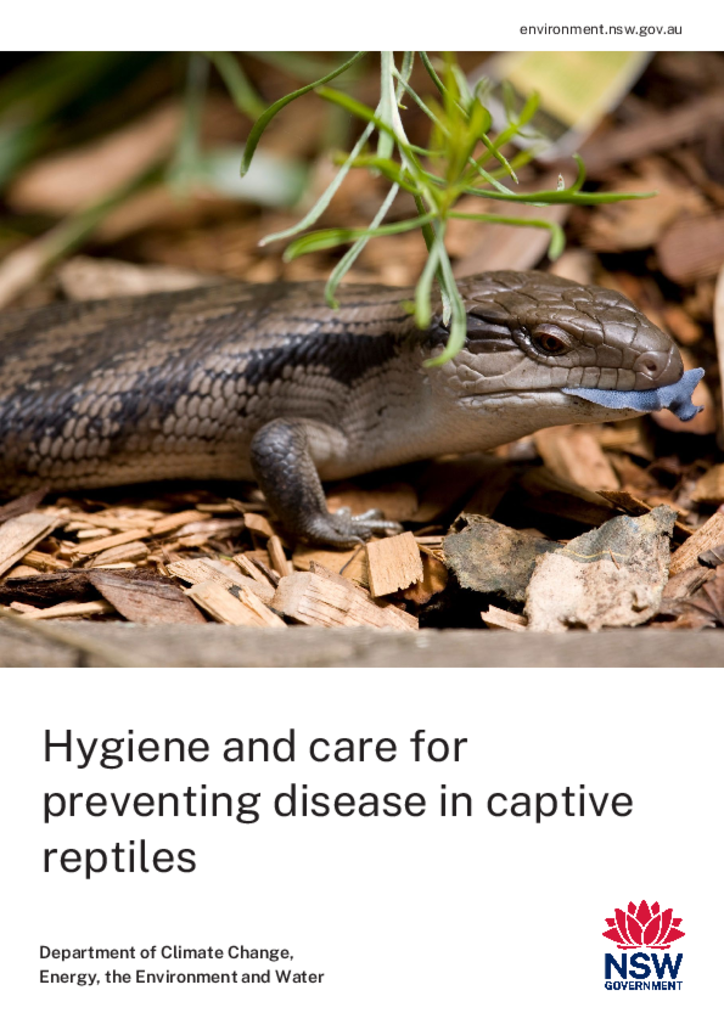Hygiene and care for preventing disease in captive reptiles
This guide is intended for those authorised under the NSW Biodiversity Conservation Act 2016 to keep native reptiles. It sets out guidelines and recommendations for the prevention and control of disease in captive native reptiles, and for reducing and managing risks to the health and safety of keepers or any others who come into contact with captive native reptiles.
Publisher: Department of Climate Change, Energy, the Environment and Water
Cost: Free
Language: English
ISBN: 978-1-923436-45-9 / ID: EH20250119
File: PDF 785.37 KB / Pages 17
Name: hygiene-and-care-for-preventing-disease-in-captive-reptiles-250119.pdf
Following good hygiene and care practices when keeping native reptiles is important to reducing the likelihood of disease in them and the potential for the spread of infectious diseases to humans, other wild or captive reptiles, or other animals. This document outlines hygiene and care guidelines designed to prevent and control disease. It covers:
- personal hygiene and how to prevent reptiles from contracting disease
- how to deal with sick or dead reptiles and to control the spread of infectious diseases
- common diseases found in reptiles and a list of clinical signs that may indicate them.
The guide is recommended for:
- anyone authorised to keep native reptiles under the Biodiversity Conservation Act
- anyone interested in keeping native reptiles in New South Wales.
This guide replaces the Hygiene protocol for the control of disease in captive snakes (2008).
